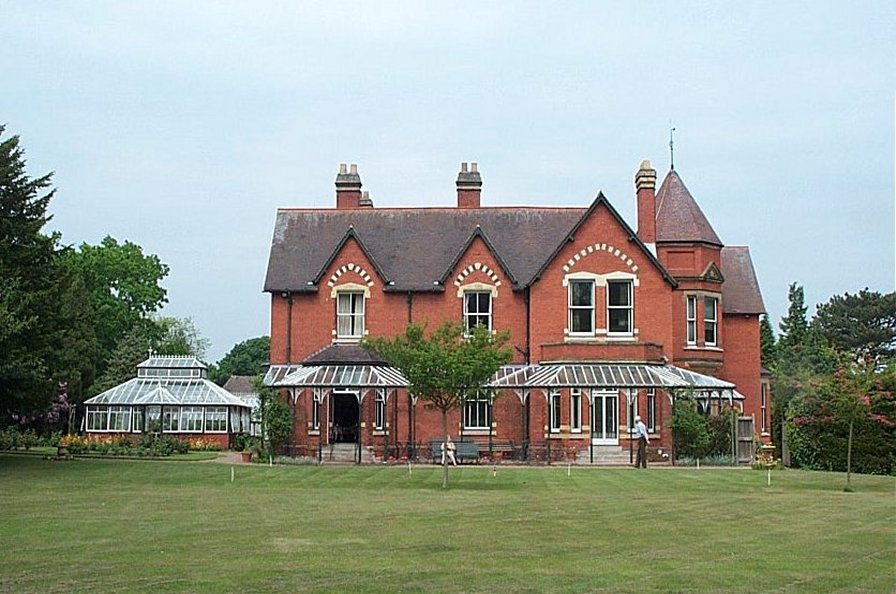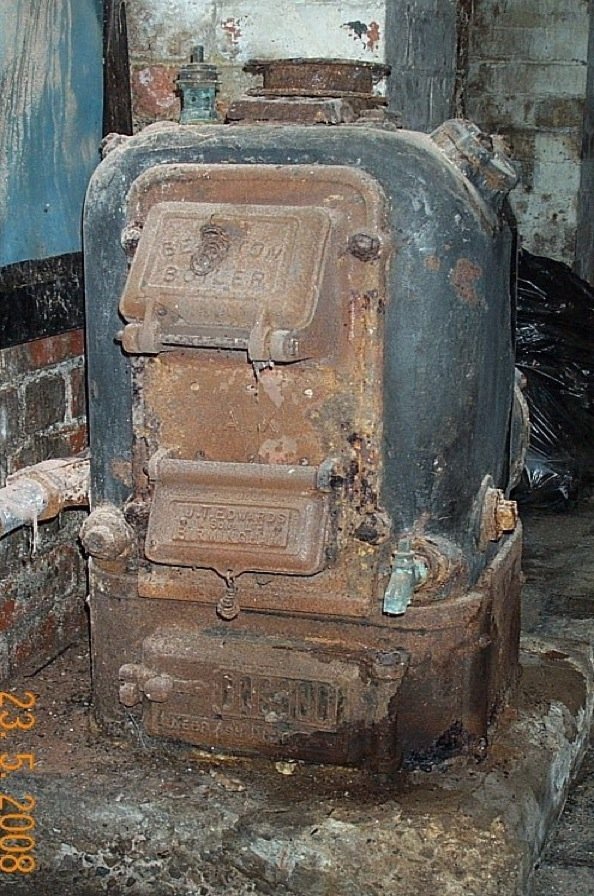
| SUNNYCROFT
WELLINGTON SHROPSHIRE |
| Sunnycroft is a Victorian Villa typical of those built for the prosperous Victorian business classes during the late 19th century. Situated in the suburbs of Wellington in Shropshire, it remained in the ownership of the same family from its completion c1880 until 1997. The house and its grounds were bequeathed to The National Trust in 1999. |
 |
The
approach to the property is made along a driveway
bordered on both sides by an impressive avenue of
very tall sequoia redwood trees.
|
HEATING SYSTEM
| It
must be assumed that if there was some type of a
heating system installed in the original part of the
house when it was built c1880, it had been removed
before National Trust became owners of the property. |
|
When
the property was extended in 1899, the owner had
installed a low pressure hot water central heating
system. The rooms in the extended part of the house
are fitted with ornamental style cast iron sectional
radiators that carry the inscription “The Beeston
Decorated” and what appears to be a Patent number.
This name refers to the manufacturer, The Beeston
Boiler Co Ltd of Nottingham. This decorative pattern
of radiator made by the Beeston firm is the first
time the Heritage Group has seen examples to
establish that any of this style has survived. The
Decorated radiator is shown in the 1921 Beeston
catalogue but had been withdrawn from manufacture by
the late 1920’s.
The
heating system installed in the original part of the
house has been designed to match the Victorian
pipework layout and radiator patterns, and thus stay
in keeping with the heating system installed during
the 1899 extensions to the property. Below is an
example of the more recent 20th century cast iron
radiator selected to match the original ornamental
style.
|
An important part of the research about historical engineering sevices is to discover the name of the firm who originally installed the heating system. Sadly many of these firms during the Victorian period did not leave any indication of the firm's name, either as a name plate or inscribed on the equipment. However, on this system there is a clue left on an old solid fuel Beeston boiler which has been left in the basement. The name of J T Edwards and Son Birmingham is inscribed on the bottom cleaning door. |
 |
GAS SERVICES
| The property was not converted from gas to electricity until 1947. This late date for conversion has proved fortunate as it has meant that virtually all the original gas wall lights (brackets and glass shades) are still as originally fitted. Remarkably the gas wall lights in the Billiard Room can still be used if required. |
FIRE GRATE
| The Master Bedroom was heated by a superb example of a Victorian tiled cast iron fire-grate. This fire-grate is fitted with double hinged doors which allowed the occupants of the room to regulate the temperature of the room. By partial opening or closing of the fire-grate doors the amount of heat entering the room from the fire, could be controlled. |
GOLD MEDAL EAGLE GRATE BY ROYAL LETTERS PATENT |
return to top

